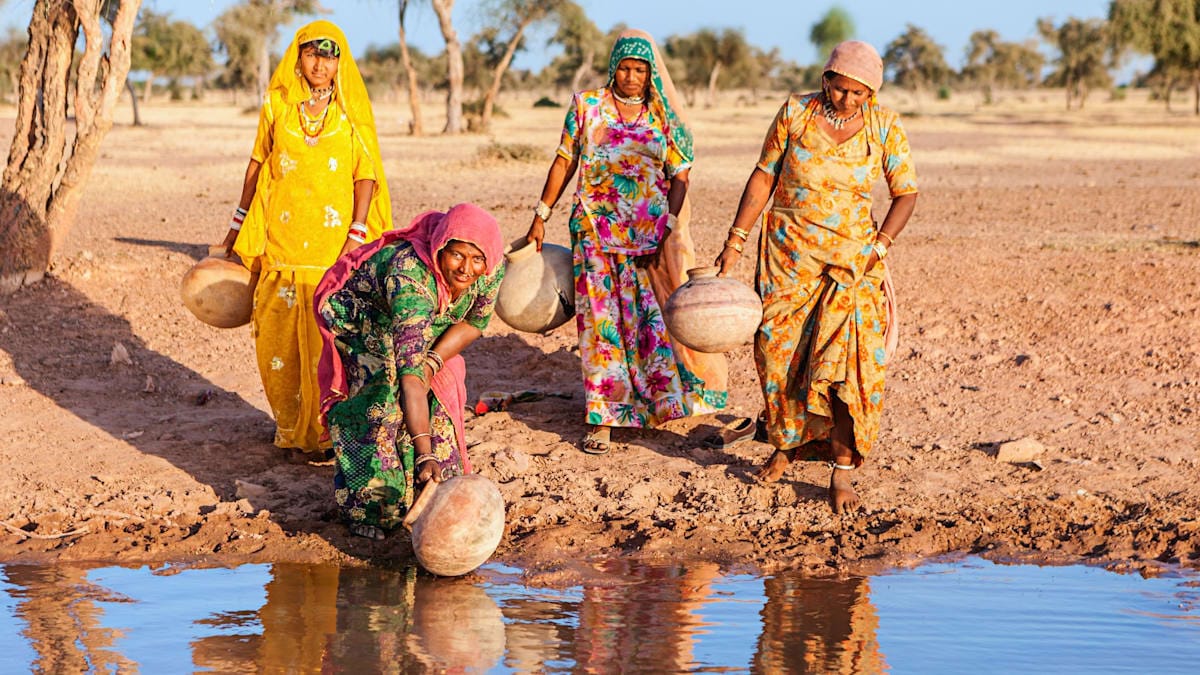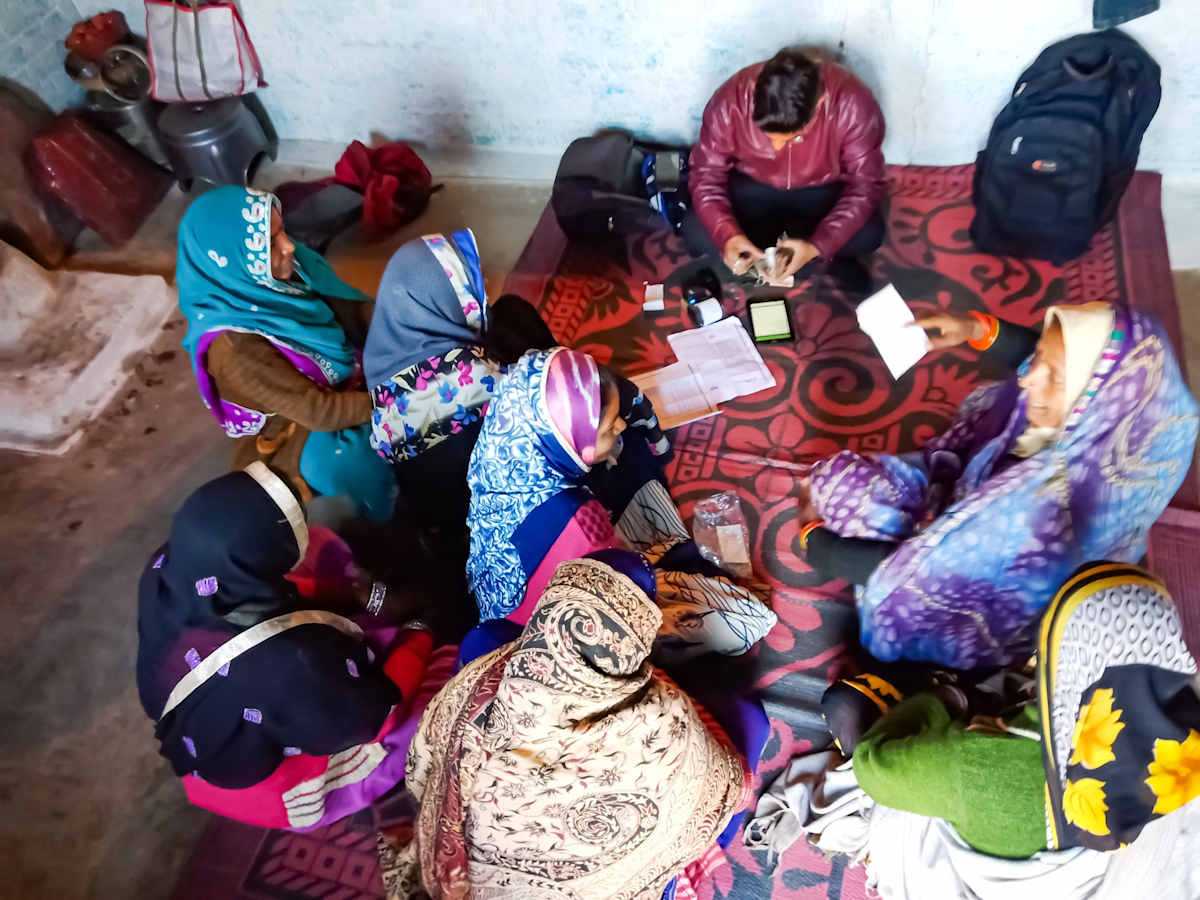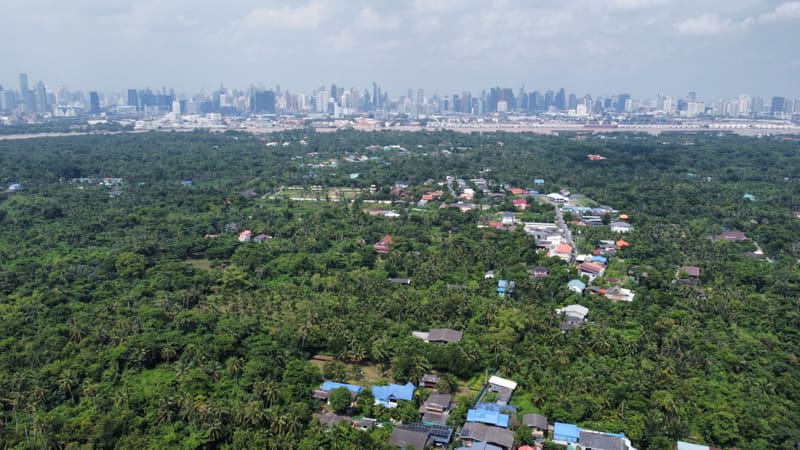
In rural India, something remarkable is happening under the shade of banyan trees. Women from self-help groups (SHGs) gather to discuss pressing issues such as unpredictable rainfall, water scarcity, and crop failures.
These groups aren’t just informal meetings; they represent grassroots innovation. While SHGs may not formally use the term design thinking, they’re already applying its principles in their fight against climate change – albeit unconsciously.
Read more: More women in leadership roles needed to address climate crisis
As India confronts the growing impacts of climate change, there’s increasing recognition that a more structured, conscious approach to design thinking could empower SHGs to become even more effective agents of change.
In doing so, they could transform from intuitive problem-solvers into organised, scalable forces for climate resilience.
SHGs: Grassroots change-makers
Self-help groups in India, primarily composed of rural women, have long been a driving force behind social and economic empowerment.
Initially focused on financial inclusion, these groups have evolved into engines for local development, tackling challenges ranging from healthcare to environmental sustainability.
🌿 Climate change is not just an environmental issue; it exacerbates existing gender inequalities, jeopardizing the livelihoods, health, and safety of women and girls worldwide. The impacts are profound, affecting their access to resources, education, and decision-making power.… pic.twitter.com/YaHVV2jNqb— Pankaj Wadhawan (@CircularIndia) November 4, 2024
Today, SHGs are on the frontline of climate adaptation in developing countries. Their close proximity to the land makes them keenly aware of how shifting weather patterns and resource scarcity affect their livelihoods.
For instance, many SHGs have turned to rainwater harvesting or agroforestry techniques to combat erratic rainfall and soil degradation. These solutions, while born out of necessity, exemplify the essence of design thinking – understanding the problem deeply, brainstorming, experimenting, and refining solutions based on feedback.
Yet, SHGs are often unaware of the design-thinking frameworks that could further enhance their innovation.
What if these groups were consciously trained to adopt design thinking? They could systematically identify challenges, prototype solutions, and scale those that work best – leading to more impactful climate action.
Moving from intuition to innovation
Design thinking is a human-centred problem-solving framework that encourages empathy, ideation, rapid prototyping, and testing.
In many ways, this is how SHGs already operate – gathering input from the community, experimenting with potential solutions, and refining them based on what works. But often, this process is unconscious and informal.
In Odisha, I meet farmers & women self-help groups receiving technical support on climate smart agriculture & training on alternative income generating activities from @NIBIO_no 🇳🇴
Called Resilience project, it now gets an additional upscale for further sustainable initiatives🙂 pic.twitter.com/SmPXKBYaHp— Ambassador May-Elin Stener (@NorwayAmbIndia) September 17, 2024
When Bengalata Rout arrived in Odisha’s Tandahara village, the sea seemed inviting. Now, it’s a threat.
“The sea was far away, now it’s close,” she says.
Her self-help group plants casuarina trees as coastal protection, with each member taking turns to water them.
With forest department support, they echo other Odisha groups like Gundalba’s, which won the UNDP Biodiversity Award in 2012 for similar forest revival efforts. This intuitive action is a classic example of design thinking in practice.
But imagine the potential if SHGs systematically applied the design thinking methodology – empathising with the community, brainstorming in a structured way, and rapidly prototyping multiple solutions to discover what works best.
This conscious application could enable them to scale their solutions across regions and address more complex climate challenges with precision.
Participatory design – co-creating solutions for all
To truly harness the power of design thinking, SHGs should also embrace participatory design, which ensures solutions are co-created with the community.
This inclusiveness makes climate interventions more holistic and sustainable. In Jharkhand, East India, SHGs show how participatory design can transform communities. Members collectively decide on loans, savings, and support, tailoring their approach to meet local needs.

For instance, after droughts, SHG members in treated villages accessed loans together, unlike control groups with limited credit. This collaborative set-up turns SHGs into a resilient, community-driven solution, helping rural families manage risks and boost food security during tough times.
Participatory design strengthens SHGs’ climate solutions by incorporating diverse perspectives, ensuring they’re culturally-relevant, adaptable, and rooted in the knowledge of those most affected.
Scaling climate solutions with conscious design thinking
While SHGs have demonstrated the ability to adapt to climate challenges, the introduction of conscious design thinking could greatly enhance their effectiveness.
A key component of design thinking is rapid prototyping – testing small-scale solutions and refining them based on feedback.
SHGs could use this approach to accelerate the pace of innovation, quickly discovering which solutions work best in different contexts.

Take, for example, SHGs in places such as Thiruvarur District, South India. Women-led self-help groups not only support economic resilience, but also serve as grassroots agents of social change.
By integrating traditional knowledge – such as groundwater recharge methods – and tailored, locally adaptive strategies, SHGs can effectively contribute to climate resilience and influence broader policy action.
Women as climate leaders
Women, particularly in rural areas, are disproportionately affected by climate change. At the same time, they’re also uniquely positioned to lead climate action.
SHGs, which are largely composed of women, represent a powerful network of potential climate leaders.
In Karnataka, women-led SHGs supported by MYRADA have been instrumental in managing water resources, promoting environmental sustainability, and ensuring equitable resource distribution.
Through community-driven efforts, they not only protect natural resources, but also build resilience against climate challenges, showing how women can lead impactful environmental action at the grassroots.
The future of grassroots climate innovation
As global leaders search for ways to combat climate change, it’s becoming clear that solutions don’t always have to come from international bodies or high-tech innovations.
Often, the most sustainable and impactful ideas come from the ground-up – communities such as India’s SHGs, which are already living through the effects of climate change and finding ways to adapt with limited resources.
SHGs represent a vast and untapped power in the global fight against climate change. By adopting design thinking and participatory design in a structured, conscious way, these groups can become even more effective innovators, developing scalable, sustainable solutions that resonate globally.
India’s rural villages, with their SHG networks, have the potential to lead by example. These grassroots innovators can inspire similar efforts in other developing nations, proving that the fight against climate change starts with empowering local communities to design their own future.
Monash is pioneering a path to a greener, smarter, more equitable and sustainable future, where emissions are lower, and the natural environment and humans thrive. We look forward to participating at COP29, where we aim to accelerate global action on sustainability, empowering diverse voices from across the Indo-Pacific and influencing superior policy outcomes across a broad range of issues. Find out more monash.edu/cop29





